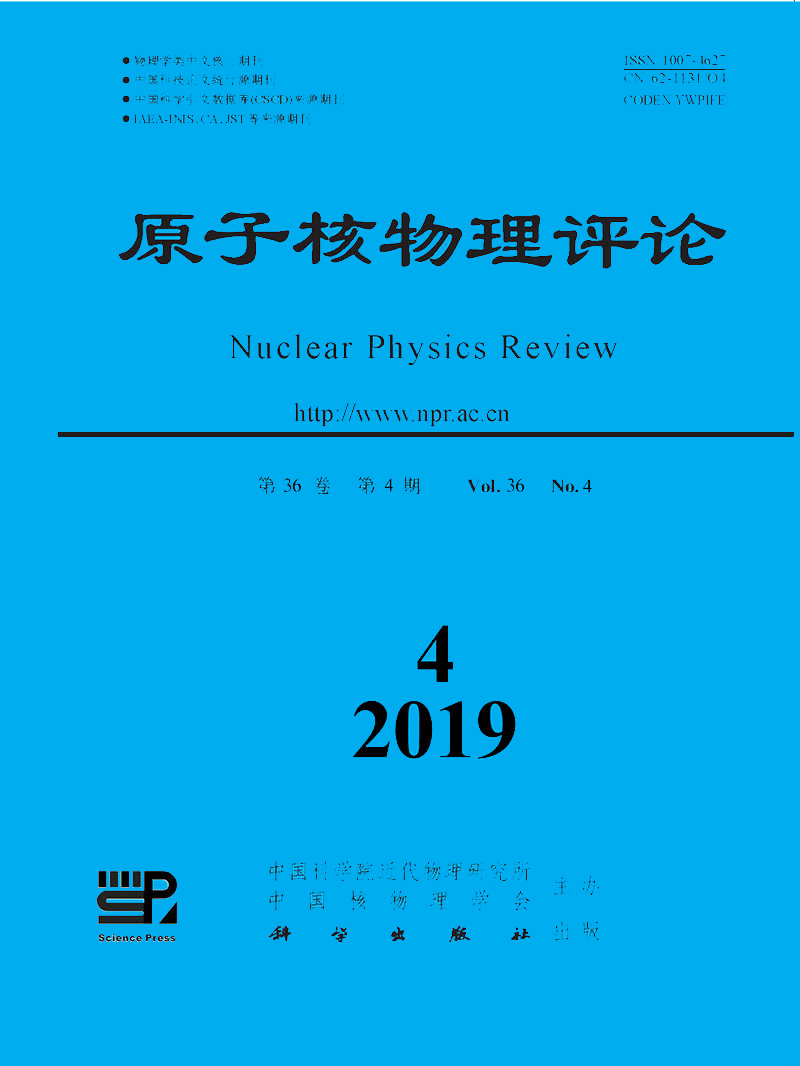|
[1]
|
GUO B, WANG N Y. Sci Sin-Phys Mech Astron, 2017, 60(10):102031. |
|
[2]
|
XIA X W, LIN Y, ZHAO P W, et al. At Data Nucl Data Tables, 2017, 121-122:1. |
|
[3]
|
YANG C Z. Acta Physica Sinica, 1962, 18(6):275.(in Chinese)(杨澄中.物理学报, 1962, 18(6):275.) |
|
[4]
|
MENG J, GUO J Y, LI J, et al. Progress in Physics, 2011, 31(4):199.(in Chinese)(孟杰,郭建友,李剑,等.物理学进展, 2011, 31(4):199.) |
|
[5]
|
MENG J. Sci Sin-Phys Mech Astron, 2016, 46(1):012001.(in Chinese)(孟杰.中国科学:物理学力学天文学, 2016, 46(1):012001.) |
|
[6]
|
ZHANG J S, HAN Y L. Commun Theor Phys, 2001, 36(04):437. |
|
[7]
|
ZHANG J S, HAN Y L. Commun Theor Phys, 2002, 37(04):465. |
|
[8]
|
DUAN J F, ZHANG J S, WU H C, et al. Phys Rev C, 2009, 80(6):064612. |
|
[9]
|
DUAN J F, ZHANG J S, WU H C, et al. Commun Theor Phys, 2010, 54(01):129. |
|
[10]
|
ZHANG J S. Commun Theor Phys, 2003, 39(04):433. |
|
[11]
|
ZHANG J S. Commun Theor Phys, 2003, 39(01):83. |
|
[12]
|
ZHANG J S, HAN Y L, GAO L G. Nucl Sci Eng, 1999, 133(2):218. |
|
[13]
|
SUN X J, DUAN J F, WANG J M, et al. Commun Theor Phys, 2007, 48(03):534. |
|
[14]
|
SUN X J, QU W J, DUAN J F, et al. Phys Rev C, 2008, 78(5):054610. |
|
[15]
|
YAN Y L, DUAN J F, SUN X J, et al. Commun Theor Phys, 2005, 44(01):128. |
|
[16]
|
ZHANG J S, HAN Y L, FAN X L. Commun Theor Phys, 2001, 35(05):579. |
|
[17]
|
DUAN J F, YAN Y L, WANG J M, et al. Commun Theor Phys, 2005, 44(04):701. |
|
[18]
|
DUAN J F, YAN Y L, SUN X J, et al. Commun Theor Phys, 2007, 47(01):102. |
|
[19]
|
SUN X J, ZHANG J S. Phys Rev C, 2015, 92(06):061601(R). |
|
[20]
|
SUN X J, ZHANG J S. Phys Rev C, 2016, 93(1):014609. |
|
[21]
|
GOLDHABER G S. Phys Rev, 1953, 90(4):587. |
|
[22]
|
KANUNGO R, TANIHATA I, OZAWA A. Phys Lett B, 2002, 528(1-2):58. |
|
[23]
|
http://www.nndc.bnl.gov/nudat2/. |
|
[24]
|
MA L, ZHANG Z Y, GAN Z G, et al. Phys Rev C, 2015, 91:051302(R). |
|
[25]
|
XU X, ZHANG P, SHUAI P, et al. Phys Rev Lett, 2016, 117:182503. |
|
[26]
|
PONCE F, SWANBERG E, BURKE J, et al. Phys Rev C, 2018, 97(5):054310. |
|
[27]
|
ADSLEY P, BRüMMER J W, FAESTERMANN T. Phys Rev C, 2018, 97(4):045807. |
|
[28]
|
ZHELTONOZHSKY V A, SAVRASOV A M, STRILCHUK N V, et al. Europhys Lett, 2018, 121(1):12001. |
|
[29]
|
WANG M, AUDI G, KONDEV F G, et al. Chinese Physics C, 2017, 41(3):030003. |
|
[30]
|
SINGH B, CHEN J. Nuclear Data Sheets, 2015, 126(3):138. |
|
[31]
|
BURROWS T W. Nuclear Data Sheets, 2007, 108(5):1049. |
|
[32]
|
ELEKES Z, TIMAR J. Nuclear Data Sheets, 2011, 112(1):121. |
|
[33]
|
YAN X L, XU H S, LITVINOV Y A, et al. Astrophysical Journal Letters, 2013, 766:8. |
|
[34]
|
BROWNE E, TULI J K. Nuclear Data Sheets, 2010, 111(9):2542. |
|
[35]
|
TU X L, XU H S, WANG M, et al. Phys Rev C, 2011, 106(11):112501. |
|
[36]
|
SINGH B. Nuclear Data Sheets, 2004, 101(2):317. |
|
[37]
|
BROWNE E, TULI J K. Nuclear Data Sheets, 2007, 108(3):759. |
|
[38]
|
BROWNE E, TULI J K. Nuclear Data Sheets, 2015, 127:315. |
|
[39]
|
CASTEN R F. Phys Rev Lett, 1985, 54:1991. |
|
[40]
|
JOHN C H, WOHN F K, LEININGER K, et al. Phys Rev C, 1986, 34:2312. |
|
[41]
|
BUCURESCU D. Phys Lett B, 1989, 229:321. |
|
[42]
|
CASTEN R F. J Phys G, 1996, 22:1521. |
|
[43]
|
ZHAO Y M, ARIMA A. Phys Rev C, 2003, 68:017301. |
|
[44]
|
BAO M, CHENG Y Y, ZHAO Y M, et al. Phys Rev C, 2017, 95:044301. |
|
[45]
|
DENG Jungang, CHENG Junhao, CHEN Jiulong, et al. Nuclear Physics Review, 2018, 35(4):463.(in Chinese)(邓军刚,程俊皓,陈玖龙,等.原子核物理评论, 2018, 35(4):463.) |






 甘公网安备 62010202000723号
甘公网安备 62010202000723号 DownLoad:
DownLoad: